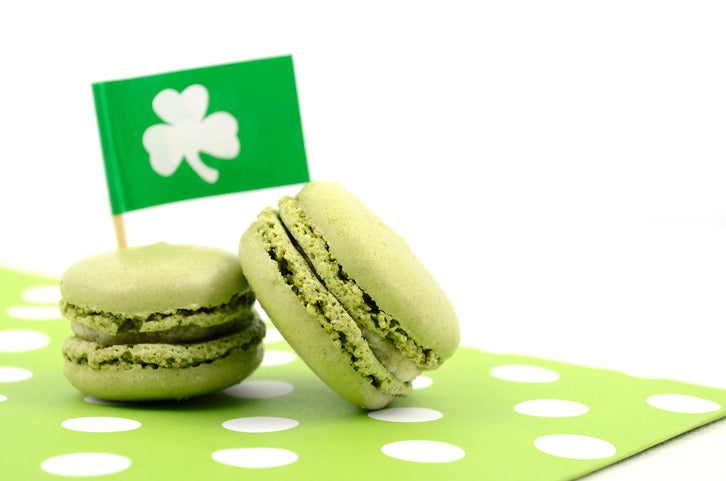Skip the Food Dye for St Patrick’s Day

A wee bit of food dye can’t be that bad, right? One of the biggest food-dye-filled holidays is quickly approaching, and while the rainbows and shamrocks of St. Patrick’s Day are fun to recreate as foods, the risks of filling your toddler with food dyes might not be worth it.
Most foods in Europe that contain artificial food dyes come with warning labels now, and their government currently has food manufacturers removing artificial colors from foods. In the United States, however, the dyes are alive and everywhere.
When you think ‘St. Patrick’s Day,’ you automatically think GREEN. No one wants to be pinched, right? Along with a green outfit, most families create green treats. It’s not hard to whip up some pancake batter and add a few drops of green food dye. Heck, why not make green eggs, a green (or rainbow) loaf of bread, some rainbow bagels, green cookies, and what about a green leprechaun cupcake topped with colored sprinkles to end the day? It’s all in good fun, right?

With researchers finding that green dye causes significant increases in testes tumors in male rats and bladder tumors in both genders, you may want to think twice. An additional problem to consider is that green food coloring or dye can also contain the ingredients propylene glycol (a synthetic liquid substance that absorbs water and is used as a solvent for food colors and flavors), the FDA-certified color additives FD&C YELLOW 5, FD&C BLUE 1 and propylparaben (a preservative). These ingredients can be linked to hypersensitivity and hyperactivity, which means neurological disruptions, more tumors throughout the body, and other problems.
Once you start reading the research on the rest of the colors available, you will certainly be reconsidering your St. Patrick’s Day ingredients. Red dyes - known carcinogens - are linked to cancers and disruption of the immune system. The list goes on and on.
So what are your colorful St. Patrick’s Day options?
Natural Dyes
There are natural dye options to purchase. They may cost more, but knowing they will not disrupt the health of your child is worth the cost. The Color Kitchen, Color Garden, Chefmaster, and even McCormick have colors from nature options!
Whole Food Dyes
By adding green teas, tumeric, beet juice or other real food juices, you can still get a beautifully colored treat.
Eat Real Foods
Red bell peppers, purple eggplant, green spinach, blueberries, grapes, strawberries, sweet potatoes, squash, bananas, the list is endless! You can create a beautiful rainbow buffet.

Food for thought:
Commonly purchased foods like drinks, yogurt, cereal, ketchup, boxed foods, snacks, red meat, margarine, and butter may also contain food coloring and dyes - and even your milk may be colored to appear whiter! Consider researching some of the foods you typically bring home so that you can make informed and healthy choices!
References:







